This article explains how to set up WordPress with WooCommerce and Nginx on Ubuntu Linux.
WooCommerce is a WordPress plugin that turns a standard WordPress website into a self-hosted online store.
Setting up WordPress with WooCommerce and Nginx on Ubuntu Linux is a popular choice for creating an online store. Nginx is a high-performance web server known for its speed and reliability. At the same time, WooCommerce is a powerful plugin that can turn a standard WordPress website into a fully functional online store.
Following these tutorial steps, users can easily install WordPress, enable the WooCommerce plugin, and start selling products or services online. The combination of Nginx and WooCommerce makes for a fast, secure, and reliable online store that can handle high traffic and transactions.
Install Nginx HTTP Server on Ubuntu
Nginx HTTP Server is the second most popular web server. Install it since WordPress CMS needs it.
To install Nginx HTTP on the Ubuntu server, run the commands below.
sudo apt update sudo apt install nginx
After installing Nginx, the commands below can be used to stop, start, and enable the Nginx service to always start up with the server boots.
sudo systemctl stop nginx.service sudo systemctl start nginx.service sudo systemctl enable nginx.service
To test the Nginx setup, open your browser and browse to the server hostname or IP address. You should see the Nginx default test page below. When you see that, then Nginx is working as expected.
http://localhost

Install MariaDB Database Server
MariaDB database server is a great place to start when looking at open-source database servers for Magento. To install MariaDB, run the commands below.
sudo apt-get install mariadb-server mariadb-client
After installing MariaDB, the commands below can stop, start, and enable the service to start when the server boots.
Run these on Ubuntu 16.04 LTS
sudo systemctl stop mysql.service sudo systemctl start mysql.service sudo systemctl enable mysql.service
Run these on Ubuntu 17.10 and 18.04 LTS
sudo systemctl stop mariadb.service sudo systemctl start mariadb.service sudo systemctl enable mariadb.service
After that, run the commands below to secure the MariaDB server by creating a root password and disallowing remote root access.
sudo mysql_secure_installation
When prompted, answer the questions below by following the guide.
- Enter current password for root (enter for none): Press the Enter
- Set root password? [Y/n]: Y
- New password: Enter password
- Re-enter new password: Repeat password
- Remove anonymous users? [Y/n]: Y
- Disallow root login remotely? [Y/n]: Y
- Remove test database and access to it? [Y/n]: Y
- Reload privilege tables now? [Y/n]: Y
Restart MariaDB server
Type the commands below to log on to the MariaDB server to test if MariaDB is installed.
sudo mysql -u root -p
Then, type the password you created above to sign on. If successful, you should see a MariaDB welcome message.

Install PHP 7.2-FPM and Related Modules.
PHP 7.2-FPM may not be available in Ubuntu default repositories. To install it, you will have to get it from third-party repositories.
Run the commands below to add the below third party repository to upgrade to PHP 7.2-FPM
sudo apt-get install software-properties-common sudo add-apt-repository ppa:ondrej/php
Then update and upgrade to PHP 7.2-FPM
sudo apt update
Next, run the commands below to install PHP 7.2 and related modules.
sudo apt install php7.2-fpm php7.2-common php7.2-curl php7.2-intl php7.2-mbstring php7.2-xmlrpc php7.2-mysql php7.2-gd php7.2-xml php7.2-cli php7.2-zip
After installing PHP 7.2, run the commands below to open Nginx’s PHP default config file.
sudo nano /etc/php/7.2/fpm/php.ini
Then, save the changes on the lines below in the file. The value below is an ideal setting to apply in your environment.
file_uploads = On allow_url_fopen = On short_open_tag = On memory_limit = 256M cgi.fix_pathinfo = 0 upload_max_filesize = 100M max_execution_time = 360 date.timezone = America/Chicago
After making the change above, please save the file and close it.
After installing PHP and related modules, you must restart Nginx to reload PHP configurations.
To restart Nginx, run the commands below
sudo systemctl restart nginx.service
Create WordPress Database
At this point, all the required WordPress packages and servers are installed. The new server is now ready to host WordPress. On the new server, create a blank WordPress database.
Run the commands below to log on to the database server. When prompted for a password, type the root password you created above.
sudo mysql -u root -p
Then, create a blank database called wp_database.
CREATE DATABASE wp_database;
Create a database user called wp_user with a new password.
CREATE USER 'wp_user'@'localhost' IDENTIFIED BY 'type_password_here';
Then, grant the user full access to the database.
GRANT ALL ON wp_database.* TO 'wp_user'@'localhost' IDENTIFIED BY 'type_user_password_here' WITH GRANT OPTION;
Finally, save your changes and exit.
FLUSH PRIVILEGES; EXIT;
Configure WordPress Site
Next, configure the WordPress site configuration file on the server. Run the commands below to create a new configuration file called WordPress.
sudo nano /etc/nginx/sites-available/wordpress
Then copy and paste the content below into the file and save it. Replace example.com with your domain name.
server {
listen 80;
listen [::]:80;
root /var/www/html/wordpress;
index index.php index.html index.htm;
server_name example.com www.example.com;
client_max_body_size 100M;
location / {
try_files $uri $uri/ /index.php?$args;
}
location ~ \.php$ {
include snippets/fastcgi-php.conf;
fastcgi_pass unix:/var/run/php/php7.2-fpm.sock;
fastcgi_param SCRIPT_FILENAME $document_root$fastcgi_script_name;
}
}
Save the file and exit.
Enable WordPress Nginx Site
After configuring the VirtualHost above, please enable it by running the commands below. Then restart Nginx and PHP7.2-FPM.
sudo ln -s /etc/nginx/sites-available/wordpress /etc/nginx/sites-enabled/ sudo systemctl restart nginx.service sudo systemctl restart php7.2-fpm.service
Download WordPress Content
Next, visit the WordPress site and download the latest…. or run the commands below to do that.
cd /tmp && wget https://wordpress.org/latest.tar.gz tar -zxvf latest.tar.gz sudo mv wordpress /var/www/html/wordpress
Then, run the commands below to set the correct permissions for the WordPress root directory.
sudo chown -R www-data:www-data /var/www/html/wordpress/ sudo chmod -R 755 /var/www/html/wordpress/
Configure WordPress
Next, run the commands below to create a WordPress wp-config.php file. This is the default configuration file for WordPress.
sudo mv /var/www/html/wordpress/wp-config-sample.php /var/www/html/wordpress/wp-config.php
Then, run the commands below to open the WordPress configuration file.
sudo nano /var/www/html/wordpress/wp-config.php
Enter the highlighted text below that you created for your database and save.
// ** MySQL settings - You can get this info from your web host ** //
/** The name of the database for WordPress */
define('DB_NAME', 'wp_database');
/** MySQL database username */
define('DB_USER', 'wp_user');
/** MySQL database password */
define('DB_PASSWORD', 'new_password_here');
/** MySQL hostname */
define('DB_HOST', 'localhost');
/** Database Charset to use in creating database tables. */
define('DB_CHARSET', 'utf8');
/** The Database Collate type. Don't change this if in doubt. */
define('DB_COLLATE', '');
Save the file, and you’re done.
Now all is configured… run the commands below to reload the Nginx web server settings.
sudo systemctl reload nginx.service
After that, open your browser and browse to the server IP address or domain name to continue with the WordPress setup.
http://example.com
If everything is set up correctly, you’ll see the WordPress setup wizard and continue with the setup.
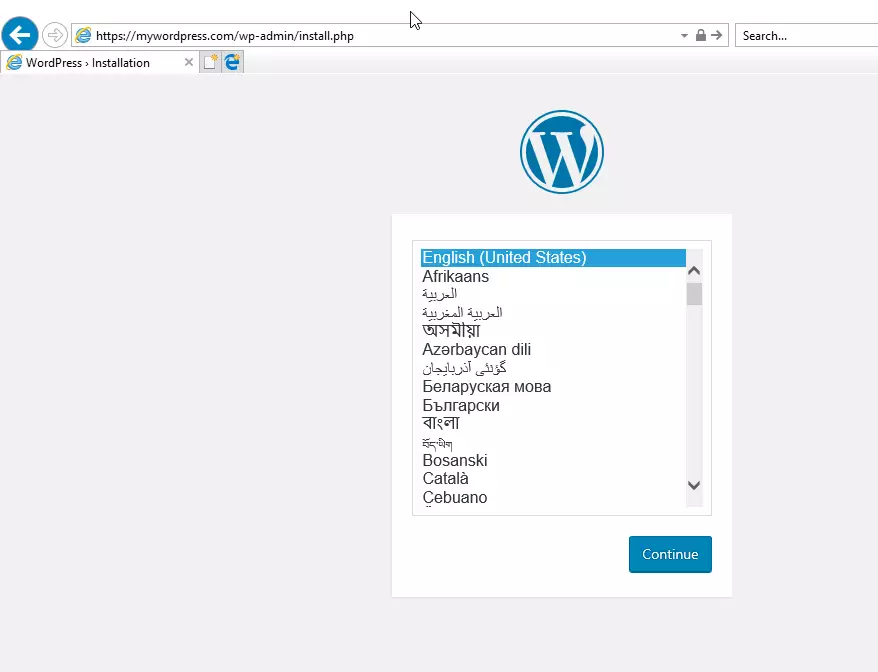
Follow the on-screen instructions to complete the wizard. First, you must create a site administrator account with a password. Then, use it to log on to the WordPress dashboard to manage WordPress.
http://example.com/wp-admin/
When logging into the WordPress dashboard, go to Plugins –> Add New. Then, search for WooCommerce and click Install Now.
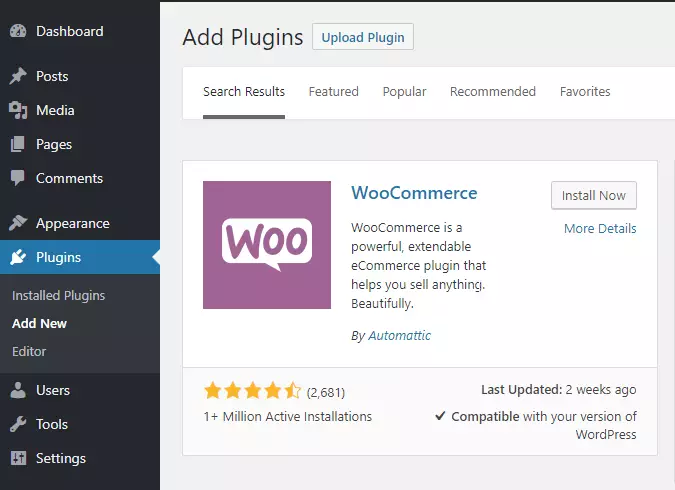
After installing, Activate. After activating, the plugin should automatically start the setup wizard. Follow the on-screen instructions.
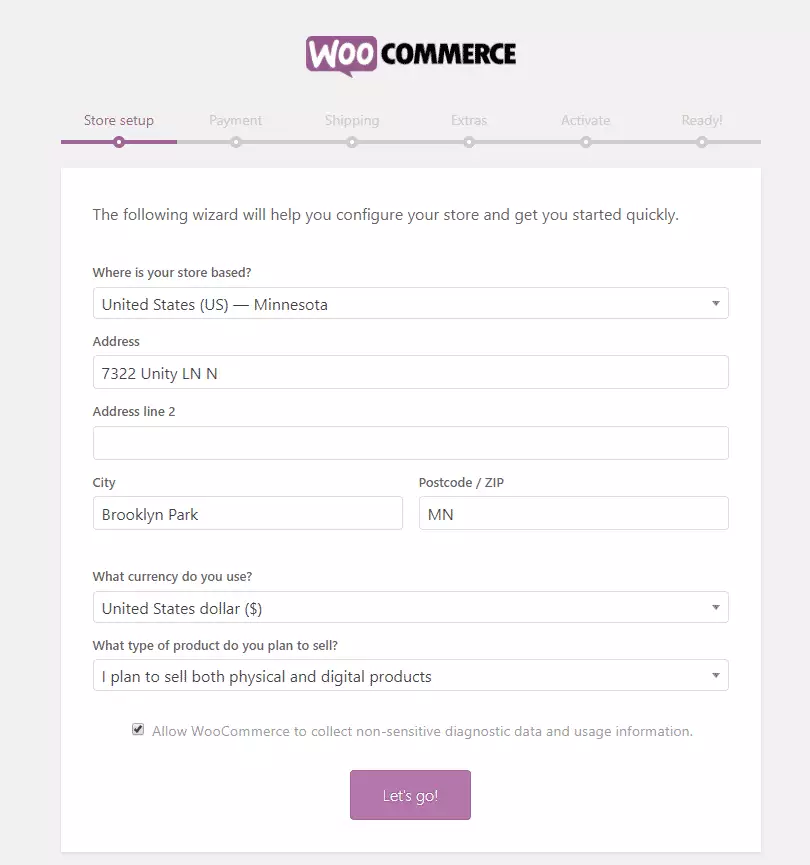
Continue until the setup is complete. After that, you can begin setting up your products to sell online.
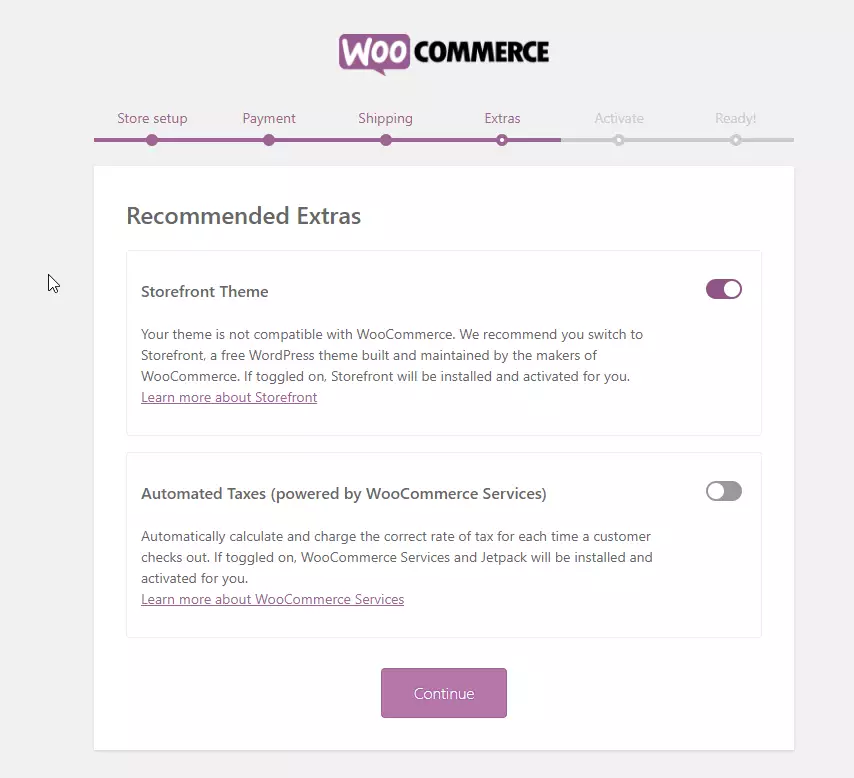
Enjoy!
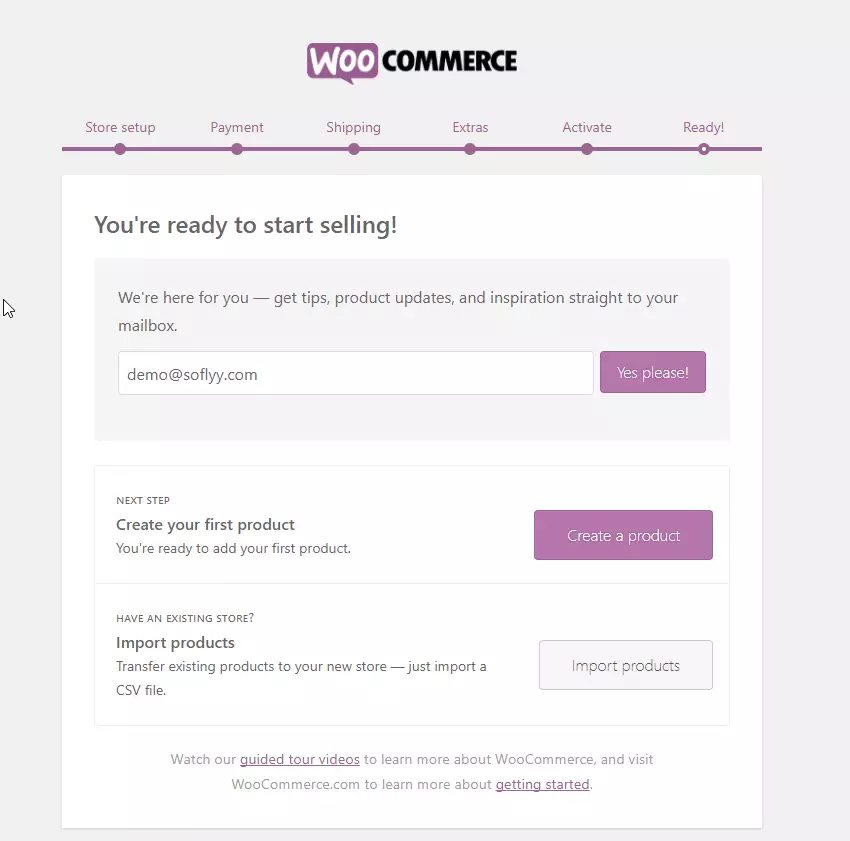
This is how to get the WooCommerce plugin set up with WordPress support.
You may also like the post below:

Leave a Reply to Alexey Cancel reply